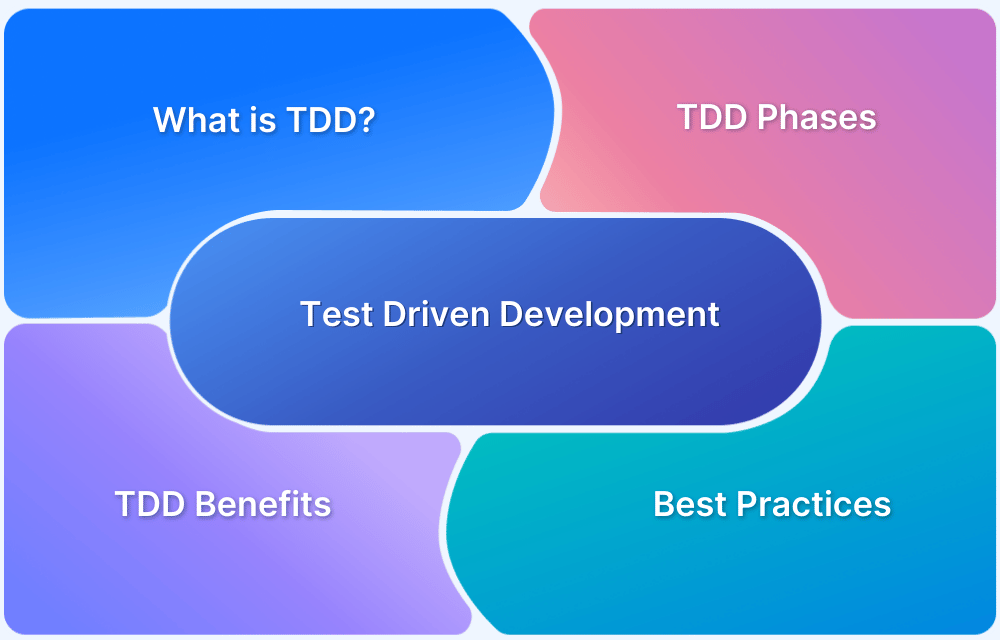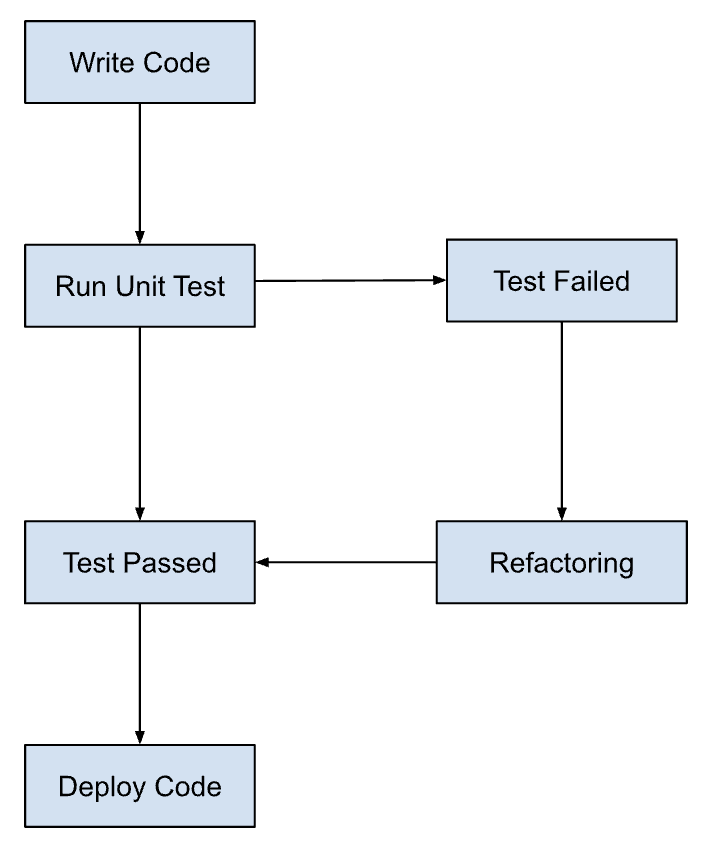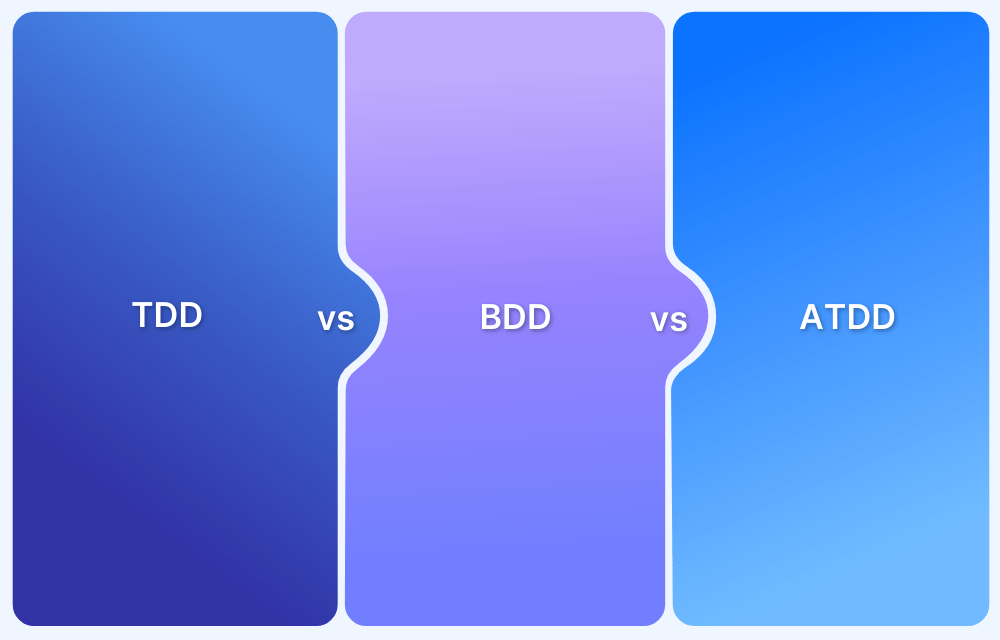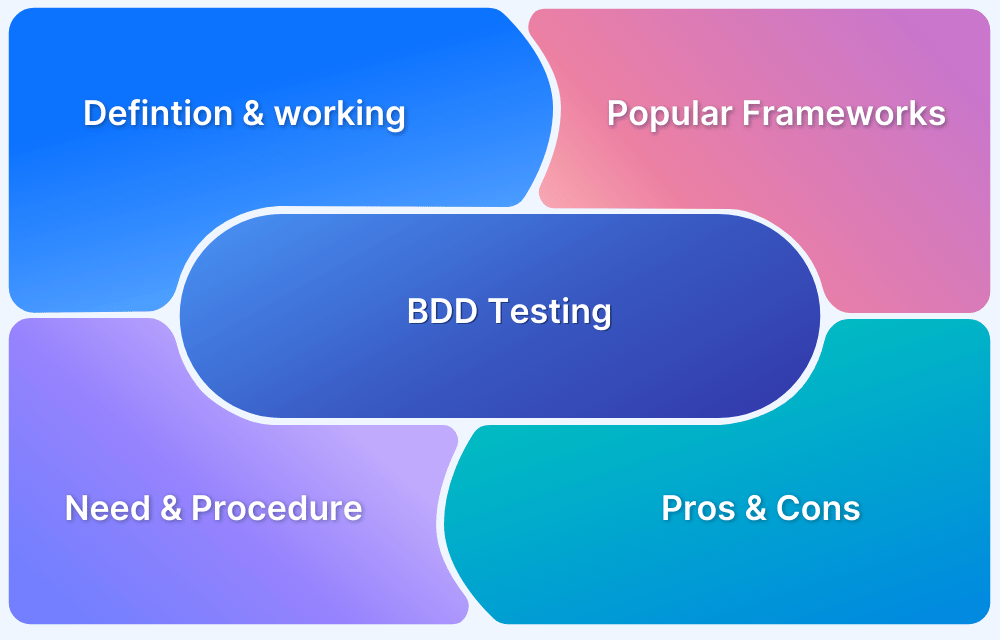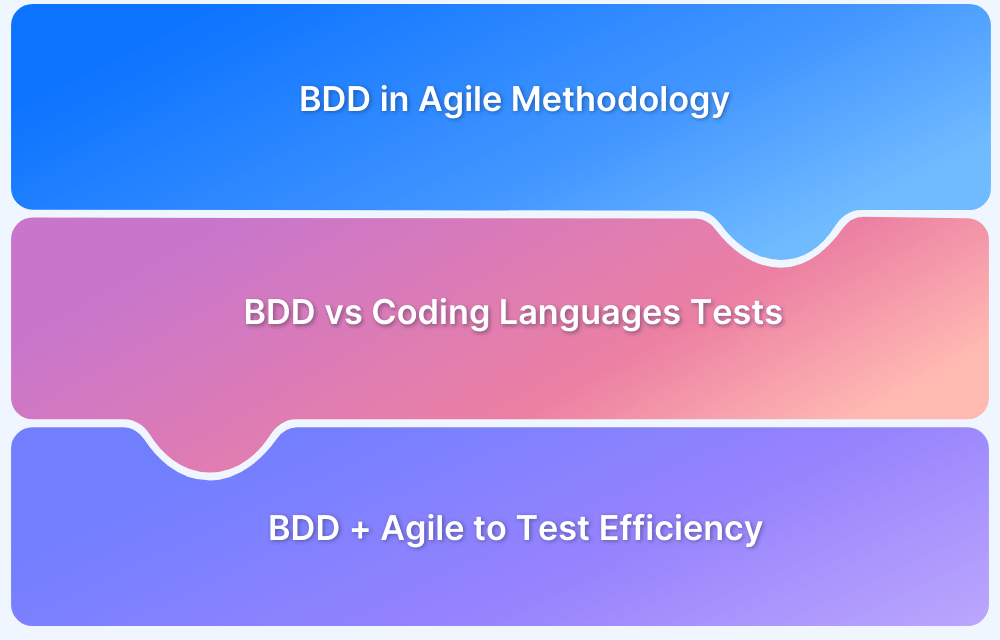The evolution of Agile development has introduced many pragmatic practices for delivering quality software at high speed. Test-Driven Development (TDD) is a practice now recognized as an efficient approach that drives positive results.
This article describes the TDD approach in detail, along with its stages, examples, and benefits in software development.
What is Test Driven Development (TDD)?
In layman’s terms, Test Driven Development (TDD) is a software development practice that focuses on creating unit test cases before developing the actual code. It is an iterative approach combining programming, unit test creation, and refactoring.
- The TDD approach originates from the Agile manifesto principles and Extreme programming.
- As the name suggests, the test process drives software development.
- Moreover, it’s a structuring practice that enables developers and testers to obtain optimized code that proves resilient in the long term.
- In TDD, developers create small test cases for every feature based on their initial understanding. The primary intention of this technique is to modify or write new code only if the tests fail. This prevents duplication of test scripts.
Test Driven Development (TDD) Examples
- Calculator Function: When building a calculator function, a TDD approach would involve writing a test case for the “add” function and then writing the code for the process to pass that test. Once the “add” function is working correctly, additional test cases would be written for other functions such as “subtract”, “multiply” and “divide”.
- User Authentication: When building a user authentication system, a TDD approach would involve writing a test case for the user login functionality and then writing the code for the login process to pass that test. Once the login functionality works correctly, additional test cases will be written for registration, password reset, and account verification.
- E-commerce Website: When building an e-commerce website, a TDD approach would involve writing test cases for various features such as product listings, shopping cart functionality, and checkout process. Tests would be written to ensure the system works correctly at each process stage, from adding items to the cart to completing the purchase.
TDD Vs. Traditional Testing
- Approach: TDD is an agile development methodology where tests are written before the code is developed. In contrast, traditional testing is performed after the code is written.
- Testing Scope: TDD focuses on testing small code units at a time, while traditional testing covers testing the system as a whole, including integration, functional, and acceptance testing.
- Iterative: TDD follows an iterative process, where small chunks of code are developed, tested, and refined until they pass all tests. The code is usually tested once and then refined based on the results in traditional testing.
- Debugging: TDD aims to catch errors as early as possible in the development process, making debugging and fixing them easier. Traditional testing, on the other hand, may require more effort to debug errors that are discovered later in the development process.
- Documentation: TDD documentation typically focuses on the test cases and their results, while traditional testing documentation may include more detailed information about the testing process, the test environment, and the system under test.
Overall, TDD offers a more efficient and reliable approach to software development, ensuring that code is thoroughly tested before being integrated into the system. Traditional testing, however, may be more appropriate for larger and more complex projects where a more comprehensive approach to testing is required.
Three Phases of Test Driven Development
- Create precise tests: Developers need to create exact unit tests to verify the functionality of specific features. They must ensure that the test compiles so that it can execute. In most cases, the test is bound to fail. This is a meaningful failure as developers create compact tests based on their assumptions of how the feature will behave.
- Correcting the Code: Once a test fails, developers must make the minimal changes required to update the code to run successfully when re-executed.
- Refactor the Code: Once the test runs successfully, check for redundancy or any possible code optimizations to enhance overall performance. Ensure that refactoring does not affect the external behavior of the program.
The image below represents a high-level TDD approach toward development:
Also Read: TDD vs BDD vs ATDD
How TDD fits into Agile development?
Agile development demands regular feedback to develop the expected product. In simple terms, one can also term Agile development as Feedback Driven Development.
There’s a high probability that project requirements may change during the development sprint cycle. To deal with this and to build products aligned with the client’s changing requirements, teams need constant feedback to avoid dishing out unusable software. TDD is built to offer such feedback early on.
TDD’s test-first approach also helps mitigate critical bottlenecks that obstruct the quality and delivery of software. Based on the constant feedback, bug fixes, and the addition of new features, the system evolves to ensure that everything works as intended. TDD enhances collaboration between team members from both the development and QA teams and the client. Additionally, as the tests are created beforehand, teams don’t need to spend time recreating extensive test scripts.
Benefits of Test Driven Development (TDD)
- Fosters the creation of optimized code.
- It helps developers better analyze and understand client requirements and request clarity when not adequately defined.
- Adding and testing new functionalities become much easier in the latter stages of development.
- Test coverage under TDD is much higher compared to conventional development models. The TDD focuses on creating tests for each functionality right from the beginning.
- It enhances the productivity of the developer and leads to the development of a codebase that is flexible and easy to maintain.
Frameworks for Test Driven Development
Based on unique programming languages, multiple frameworks support test driven development. Listed below are a few popular ones.
- csUnit and NUnit are open source unit testing frameworks for .NET projects.
- PyUnit and DocTest: Popular Unit testing framework for Python.
- Junit: Widely used unit testing tool for Java
- TestNG: Another popular Java testing framework. This framework overcomes the limitations of Junit.
- Rspec: A testing framework for Ruby projects
Best Practices for Test Driven Development (TDD)
Test-driven development (TDD) is a software development practice that emphasizes writing tests before writing the actual code. It follows a cyclical process of writing a failing test, writing the minimum code to make the test pass, and then refactoring the code. Here are some best practices to consider when practicing TDD:
- Start with a clear understanding of requirements: Begin by understanding the requirements or specifications of the feature you are developing. This will help you write focused and relevant tests.
- Write atomic tests: Each test should focus on a specific behavior or functionality. Keep your tests small and focused, addressing a single aspect of the code. This improves test readability, maintainability, and allows for easier debugging.
- Write the simplest test case first: Begin by writing the simplest possible test case that will fail. This helps you focus on the immediate task and avoids overwhelming yourself with complex scenarios upfront.
- Write tests for edge cases: Consider boundary conditions and edge cases when designing your tests. These are inputs or scenarios that lie at the extremes of the input domain and often reveal potential bugs or unexpected behavior.
- Refactor regularly: After a test passes, take time to refactor the code and improve its design without changing its behavior. This helps maintain clean and maintainable code as the project progresses.
- Maintain a fast feedback loop: Your test suite should execute quickly so that you can receive immediate feedback on the health of your code. Fast feedback allows for faster development iterations and catches issues early on.
- Automate your tests: Utilize test automation frameworks and tools to automate the execution of your tests. This enables you to run tests frequently, easily integrate them into your development workflow, and ensure consistent and reliable test results.
- Follow the Red-Green-Refactor cycle: Adhere to the core TDD cycle of writing a failing test (Red), implementing the minimum code to pass the test (Green), and then refactoring the code to improve its design (Refactor). Repeat this cycle for each new behavior or feature.
- Maintain a comprehensive test suite: Aim to achieve a good balance between unit tests, integration tests, and acceptance tests. Each test type serves a different purpose and provides different levels of confidence in the code.
- Continuously run tests: Integrate your test suite with your development environment and set up continuous integration (CI) pipelines to automatically execute tests whenever code changes are made. This ensures that tests are run consistently and helps catch regressions early.
- Test failures should guide development: When a test fails, it should guide your development efforts. Analyze the failure, identify the cause, and fix the code to address the issue. Test failures are valuable feedback for improving code quality.
Delivering quality products requires debugging and optimization in the development process. When incorporated correctly, the TDD approach provides numerous benefits, particularly in bringing cost-efficiency in the long run and delivering true value to businesses.
